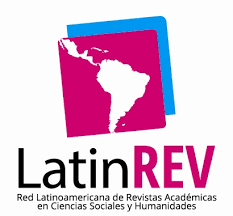Elaboración de un instrumento para evaluar los duelos normales en el desarrollo adolescente
Keywords:
adolescence, grief, factor analysis, reliabilityAbstract
The objective of the present investigation was the elaboration and validation of an instrument to evaluate the normal duels of adolescence, based on the theory of Arminda Aberastury: mourning for the Infantile Body, mourning for the Infantile Identity and mourning for the Parents of the Childhood , after an extensive literature review and previous research in the area. The sample of the pilot study was of 268 subjects and that of the final study of 1260 subjects, aged between 9 and 24 years. The final instrument consists of 35 simple selection items with five response alternatives, divided into three sub-tests. The reliability of each sub-scale was analyzed through Crombach's alpha, obtaining a value of 0.673 for the Duel for the Body; 0.614 for the Duel for the Identity and 0.606 for the Duel for the Parents of the Childhood. The validation of the content was considered through three expert judges and the construct validity through the factorial analysis, obtaining in the sub-scale Duel by the Infant Body a KMO of 0.762 and three factors were extracted: anguish of illness, self-image and acceptance of changes. In the sub-scale Duel for Childhood Identity, a KMO of 0.649 was obtained and five factors: childhood nostalgia, death anxiety, depersonalization, sensation of change and self-satisfaction. Regarding the Duel for the Parents of Children, a KMO of 0.720 was obtained and four factors: detachment, model parents, rejection of authority and incomprehension.
Downloads
Published
How to Cite
Issue
Section
License
The Editorial Committee of the Journal reserves the right to introduce formal modifications necessary to adapt the text to the publication standards, for this reason, the digital version of the article presented must be modifiable.
Once published, the printing and reproduction rights belong to the Publisher. It is optional for the Editor to allow the reproduction of the article. In this way, it works with the Creative Commons 4.0 license, which deals with non-commercial recognition, share alike.






